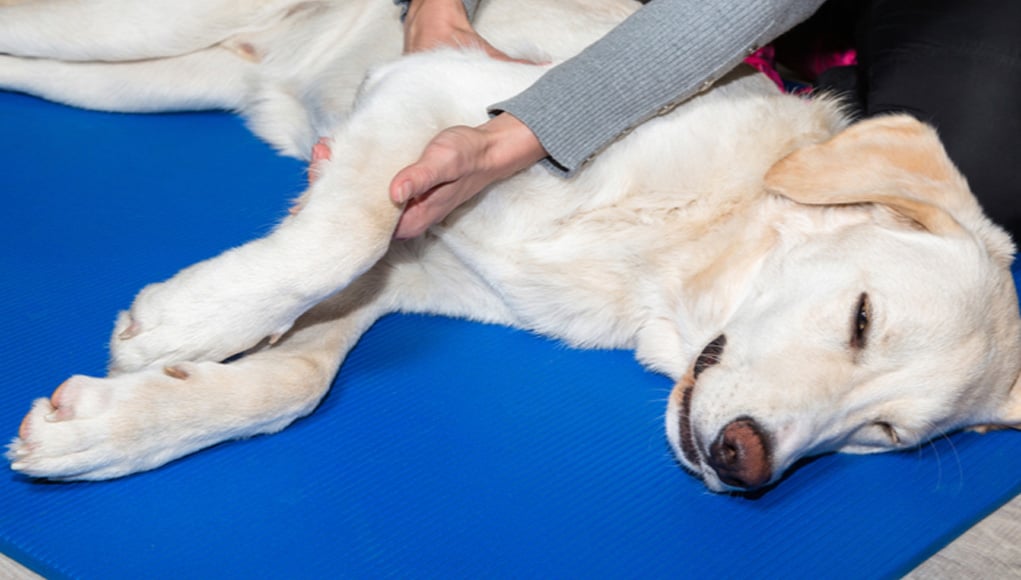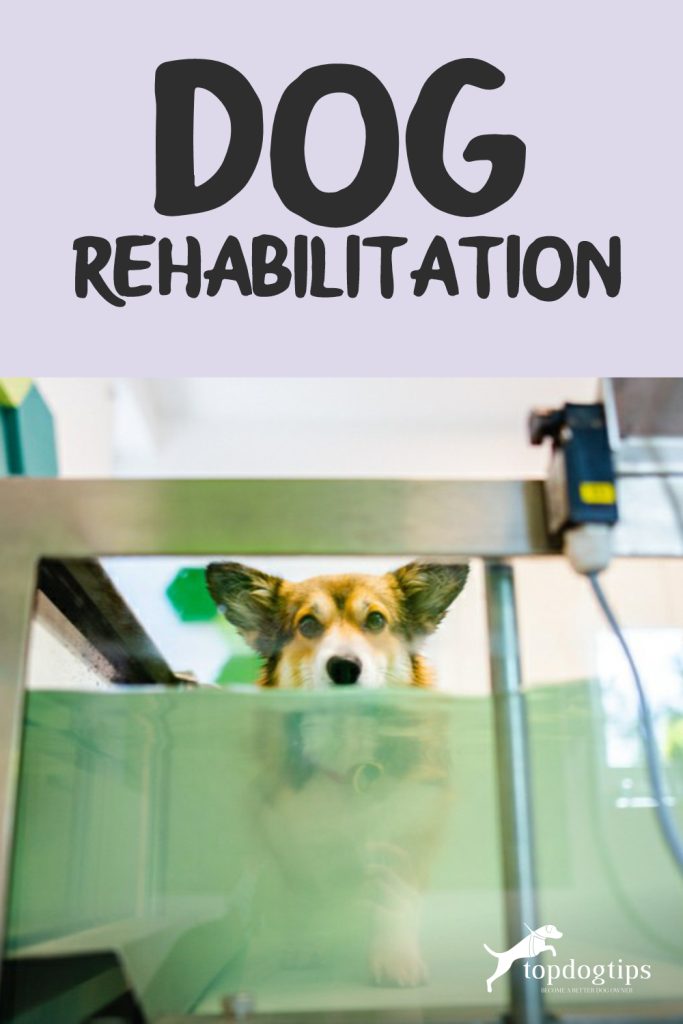Is your canine suffering from a severe injury that limits his movement? Dog rehabilitation may be the holy grail that can save him.
But how will you know if your fido is a good candidate for dog rehab?
In this article, we will discuss:
- What is dog rehabilitation, and when does your pup need it?
- How to find a qualified physical therapist for your dog?
- What treatments are involved in canine rehabilitation?
- How much does it cost, and can you DIY it at home?
Whether your dog is getting weak or recently had surgery, this article can surely help.
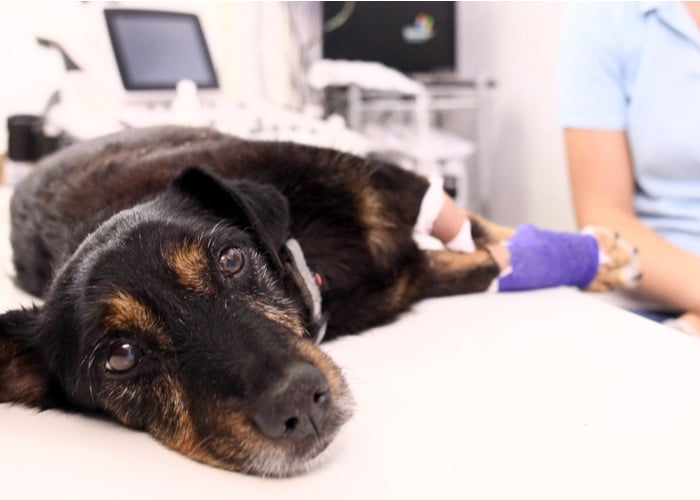
But, What is Dog Rehabilitation?
Dog rehabilitation is a field that is similar to physical therapy in humans in many ways.
It focuses on implementing specific exercise programs and therapeutic modalities to decrease the pain and restore a body part's function.
Additionally, it aids in increasing mobility and improving the health and fitness of a canine.
Although human and canine anatomy varies, dog rehabilitation is adapted from the physiotherapy principles from humans, which include:
- restoring, maintaining, and optimizing canine's strength, and movement
- improving your pup's overall well-being
It involves a series of examinations, evaluations, diagnoses, and specialized physical interventions.
It also promotes a stronger bond and relationship between the animal, owner, vet, and other health care providers for canines.
Two Main Branches of Dog Rehabilitation
There are two main branches of canine rehabilitation your pet can benefit from:
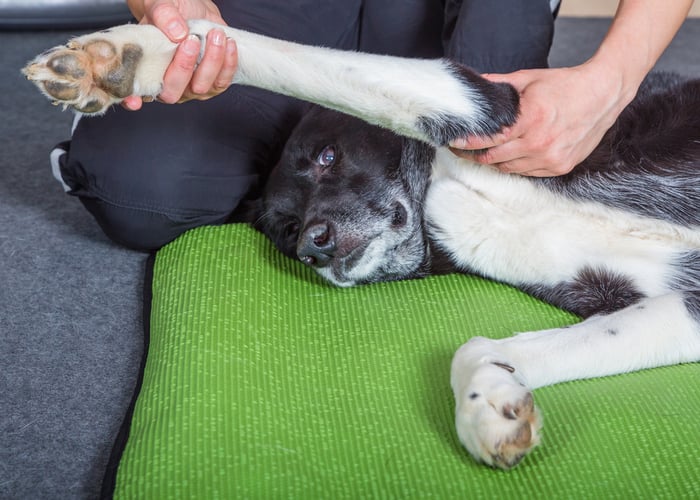
1. Physical rehabilitation
This branch of dog rehabilitation addresses the medical conditions a canine is currently facing.
It includes acute or chronic injuries and other disabilities or physical limitations.
This type makes use of therapeutic exercises and other methods to improve function and promote healing.
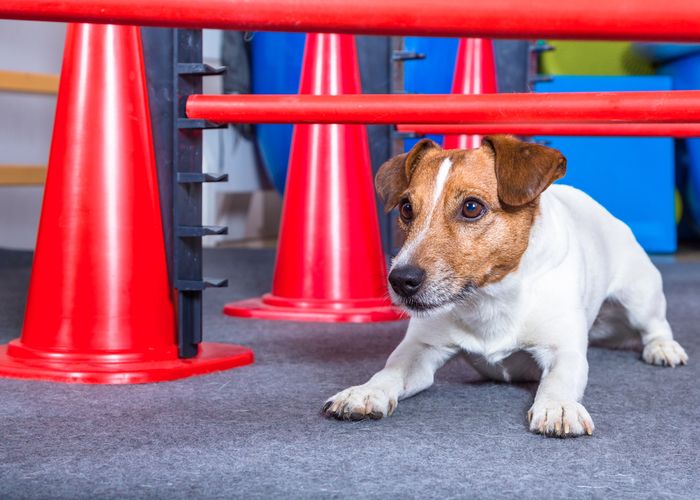
2. Fitness and wellness
The primary goal of this branch is to help canines become proactive to prevent the occurrence of injuries.
Aside from that, it can improve their quality of life and performance.
If your dog is healthy and active, this branch is suitable for him.
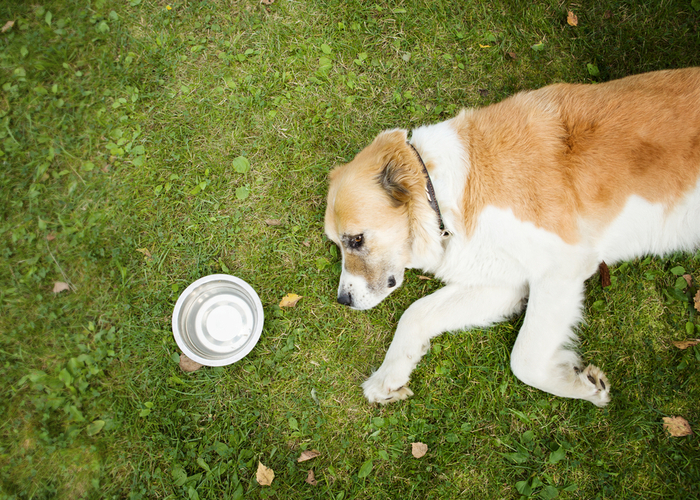
When Does My Dog Need Rehab?
One of the best ways to know if your dog needs rehabilitation is to ask your primary veterinarian.
The following conditions or situations can also indicate that a dog needs rehabilitation:
- paralyzed or has limited movement due to an accident, trauma, or injury
- went through surgery and is on the road to recovery
- not functioning or performing to the fullest of its abilities
- needs to improve strength and endurance for a competition
- has deteriorating health and degenerative diseases like arthritis
- has developed a behavioral problem which could be due to poor health or pain
If you observed that your dog experiences the situations above, you’d know if your dog can be a good fit for rehab.
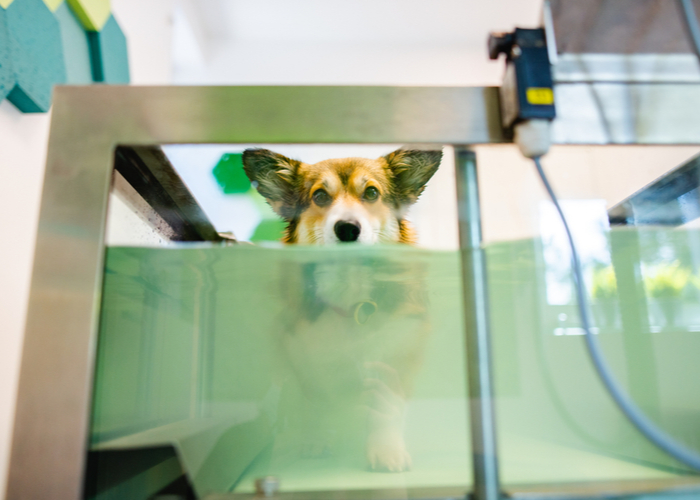
What Treatments are Involved in a Dog Rehabilitation?
The treatment varies and tailored into a canine's medical condition, but it may include one or a combination of the following:
- Swimming
- Acupuncture
- Heat Application
- Underwater Treadmill
- Cold Pack Application
- Therapeutic Ultrasound
- Therapeutic Laser Therapy
- Neuromuscular Electrical Stimulation
- Weight Shifting and Balance Activities
- Transcutaneous Electrical Nerve Stimulation (TENS)
- Manual Therapy or Joint Mobilization
- Low Impact Exercise on Land and Water
- Range of Motion Exercises (ROM)
- Rehabilitation Stem Cell Therapy
- Obstacle course exercises
- Alternative therapies like massage
These treatments can help alleviate the dog's pain, restore their function, and improve their performance and abilities.
So, it can enable them to live a better and happy life.
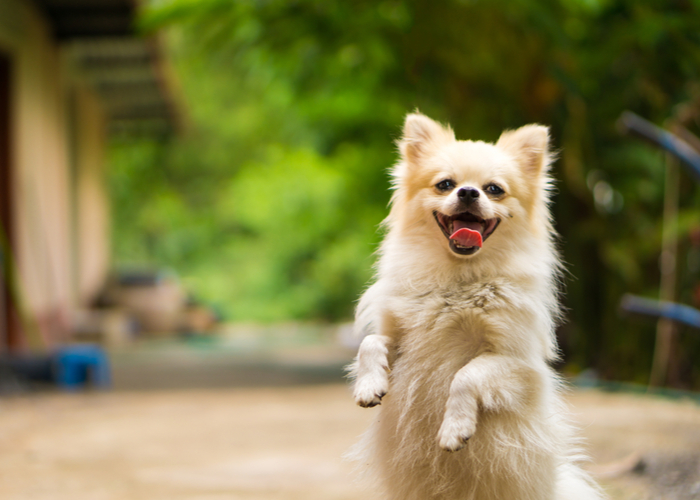
Benefits of Dog Rehabilitation
Just as physical therapy is beneficial to humans, canine rehabilitation also offers many benefits to dogs of all ages.
Whether your dog has a musculoskeletal or neuromuscular problem, rehab can help your pup out.
Not only will it help dogs to be healthy and active, but it can also prevent injury and surgery.
In instances where surgery is crucial and unavoidable, post-operative rehab can aid in faster reduction of pain and quicker recovery.
Physical therapy can also help in the following medical conditions:
- obesity or overweight
- serious trauma-related injuries
- rear limb weakness and paralysis
- Soft tissue sprains and strains and injuries of the ligaments, tendons, and muscles
- hip and elbow dysplasia (the presence of abnormal cells in a tissue/ organ)
- Amputation recovery
- gait or walking abnormalities
- the spinal cord, bone, and joint injuries and surgeries
- spine disorders like intervertebral disk disease or IVDD
- osteoarthritis, or other degenerative joint diseases (DJD)
- working and athletic dogs to promote optimal performance
- post-surgical recovery of the knee, hip, back, or neck
- neurological disorders, such as degenerative myelopathy
- nerve disorders like fibrocartilaginous embolism or FCE and vestibular disease
- Neurological rehabilitation after a spinal decompression surgery (hemilaminectomy)
- Fibrocartilaginous embolism (FCE) and spinal cord contusion
The benefits of physical rehabilitation therapy for dogs include:
- decreased pain and faster healing or recovery
- improved function and cardiovascular fitness
- increased joint mobility, muscle strength, flexibility, and endurance
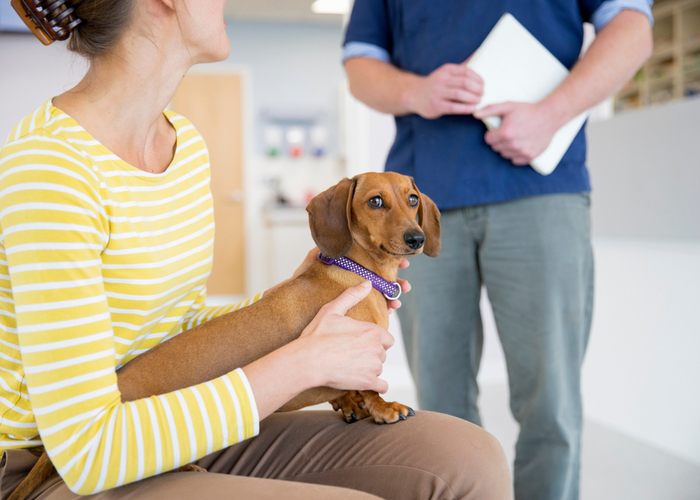
Do I Need Vet Referral for Dog Rehabilitation?
Veterinary referral or medical clearance is essential for dog rehabilitation if your dog has underlying medical conditions like an injury.
It may also be required if your fido needs post-surgical services.
Therefore, you'll need to consult with your dog's vet before trying out any physical therapy.
In such a case, physiotherapists need to work closely and communicate with your pet's vet.
By doing so, they can provide the best possible care and treatment for your fido's medical condition.
But, if you and your canine are visiting a physiotherapist for fitness evaluation, a vet referral is not necessary.
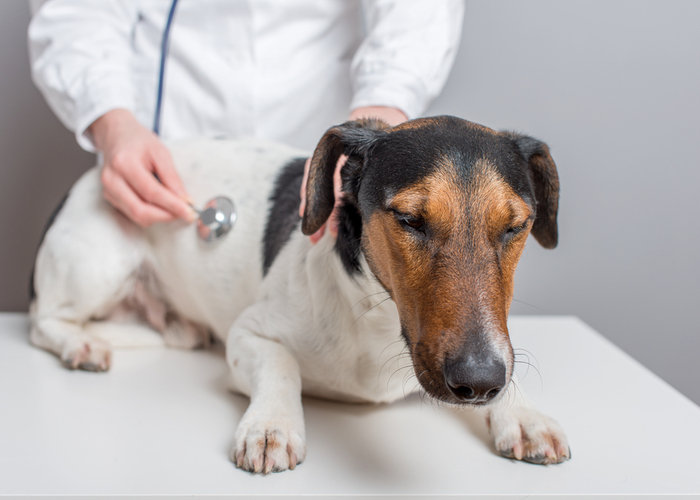
Dog Rehabilitation Process
In your first visit to a physical therapist or rehabilitation vet, your dog will go through the following process:
Musculoskeletal and Neuromuscular Evaluation
This comprehensive and specialized complete body examination will give the physiotherapist the information needed to create an individualized treatment plan.
This examination will involve checking medical, veterinary diagnosis, analysis of past treatments, and their result.
The practitioner will also discuss other considerations, including the pet's current medication.
They'll need to observe your dog's gait, posture, and balance and assess its functional skills.
On top of that, Your dog will also undergo neurological tests, skin integrity (wounds) assessment, and other tests.
Addressing Your Fido's Needs
After identifying the problems in your dog's body, the physical therapist will then address your dog's health issues.
Then, he will tailor the treatments according to your fido's needs.
The practitioner will use different approaches like manual therapy for joint and tissue mobilization, therapeutic strengthening, and balancing exercises.
Treatments involved in the rehab is undoubtedly time-consuming and will cost you a considerable amount, but it can be gratifying.
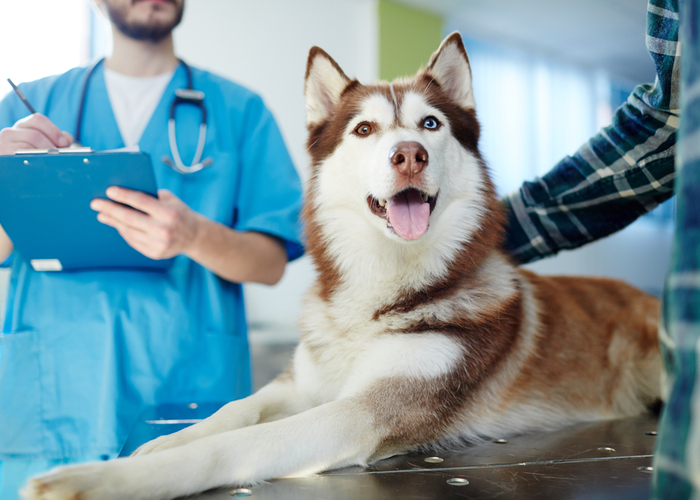
How to look for a qualified canine physical therapist?
When looking for a qualified physical therapist for the rehabilitation, checking if the practitioner has the proper education is crucial.
Human physical therapists have an idea about rehab since some methodologies and techniques for humans apply to canines.
But canine PT (physical therapy) requires more than the entry-level competencies of human PT programs in the US.
Furthermore, some veterinary schools in the US do not include physical rehabilitation as part of their core curriculum.
Therefore, not all of them are qualified.
Do you want to ensure your dog's safety and success in the rehab?
Then, working with a qualified physical therapist or a veterinarian with additional training in canine rehabilitation is the best option.
A certified canine physical therapist assistant or a registered veterinary technician may render the physical rehab too.
But only if qualified PTs or vets are present to supervise them.
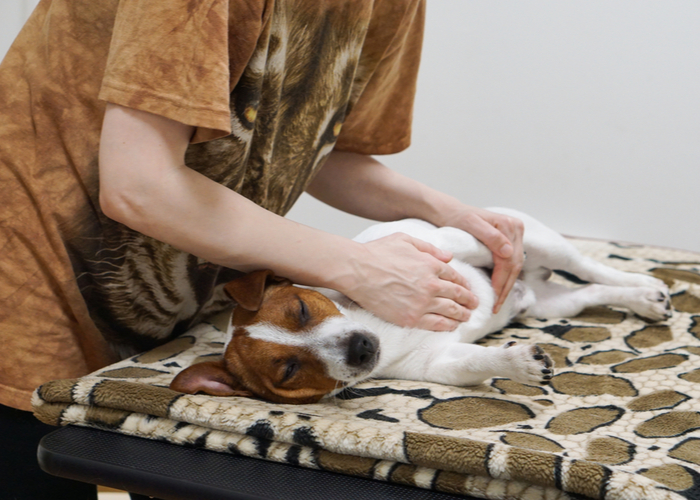
Can I Do Physical Therapies at Home?
Not all pet owners can visit a physical therapist.
There may be no PT living in their city, or most veterinarians in their area aren't trained for such practice.
So, many are wondering if it's something DIY-able at home.
While consulting a licensed physical therapist is the safest route, you can do some exercise programs at home.
Additionally, treatment plans designed by PTs for your fido's needs include instructions for both home and clinic care.
So, naturally, you got some homework to do if you'll consult and work with a qualified PT for the rehab.
You'll have to contribute to the program by providing TLC on a day-to-day basis.
Physical Therapy Exercises for Your Dog Which Are Doable at Home
If there's no qualified physical therapist in your city, the following exercises may help your dog recover and get back to its paws.
Ideal Physical Therapy Exercises During Early Stages of Recovery
Most dogs must undergo a crate rest after coming home.
This period usually lasts around three to four weeks, so your dog will naturally feel weary and weak.
But here are some gentle exercises that can help your dog relax for a bit.
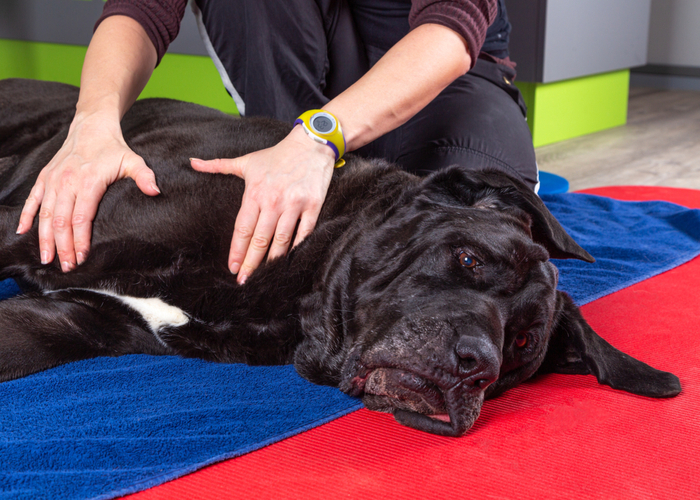
Gentle Massage
Gently massage your pup's body up and down.
This simple gesture can improve your fido's blood circulation and increase its muscle tone.
Do it at least three times a day during the first week but keep it short and sweet.
It isn't a deep tissue massage but a gentle rub that starts from the shoulders down to the rear limbs.
Squeezing toes
This therapeutic exercise aims to help your fido regain “deep pain sensations” or feelings in their paws and limbs.
You can do it by pulling or squeezing the toes in affected paws in a firm way.
However, it would be best if you won't make it too hard to avoid injury.
A healthy canine will naturally pull its paw as a reaction to a painful stimulus.
And in this exercise, your pet should learn how to respond.
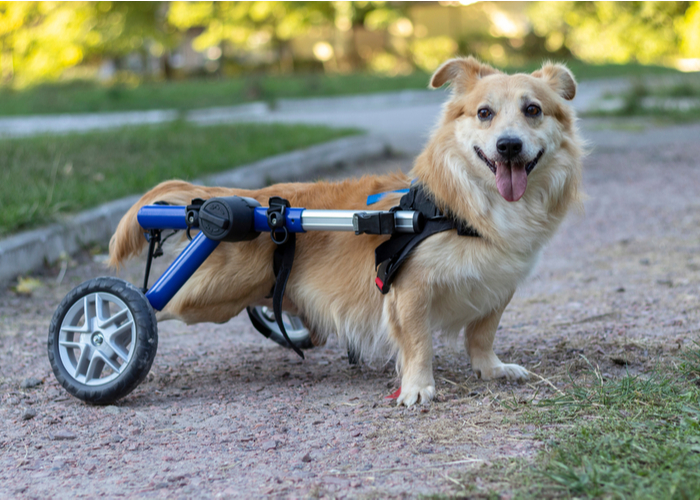
Rehabilitation Exercises After 3 to 4 Weeks of Crate Rest
Strength Training
Dogs who went through surgery or were paralyzed will have a hard time regaining their balance.
For them to be able to strengthen their core and bear their weight again, they’d have to undergo strength training.
To execute this exercise, gently roll your pup's body from side to side and see if your pet tolerates it.
If everything goes well, gently lie your dog on top of a large balance ball with its face down.
Then, slowly roll the ball from side to side.
This technique can teach your dog how to regain its balance as it helps your pup utilize its abdominal muscle.
Dogs in wheelchairs who need strong stomach or core muscles can also benefit from this exercise.
Passive Range of Motion (PROM)
If your pup can tolerate the pain, you can proceed to this step.
You can do it by letting your pet lie on one side and gently flexing and releasing each toe in a limb ten times.
Then, slowly bend the leg out and into the hip ten times.
Lastly, rotate its limb in a circular motion, like the way our feet move when we ride on a bike.
But reverse it in every turn.
After the first limb, try to flip your dog to the other side gently.
Then, go on with the next one and repeat the same steps.
Physical Rehab Exercises for Dogs Who Can Now Stand / Trying to Stand
Stand and Count
Help your dog stand up and see how long it takes for them to sit or lie down again.
Keep on repeating it if it tolerates it, and try to prolong the standing time.
Stand and Shift Weight
Gently push your dog's hips at about an inch or two as it stands up.
With this exercise, your dog should correct the push and regain a balanced position by itself.
If your puppy struggles to do so, here's a tip to help him out:
Assist him by placing your hand under its belly to provide support while doing and repeating the exercise 5 times.
Sit and Stand
Make your dog sit, then stand up and repeat it five times to improve its muscle strength.
Tail Pinch
Urge your dog to walk around you.
Then, gently pinch his tail tips while following behind to improve its awareness of its legs and tail.
Heads Up
In this training, your dog can either sit or stand.
You need to place a treat above its head.
Your goal is to encourage your pup to lift its head and neck to grab it.
Then, hold another treat down to its chest so that it'll lower its head to grab it.
You may repeat it 15 times.
Then after accomplishing the exercise, place a treat on one side and the other.
This can urge your pup to walk around to reach it.
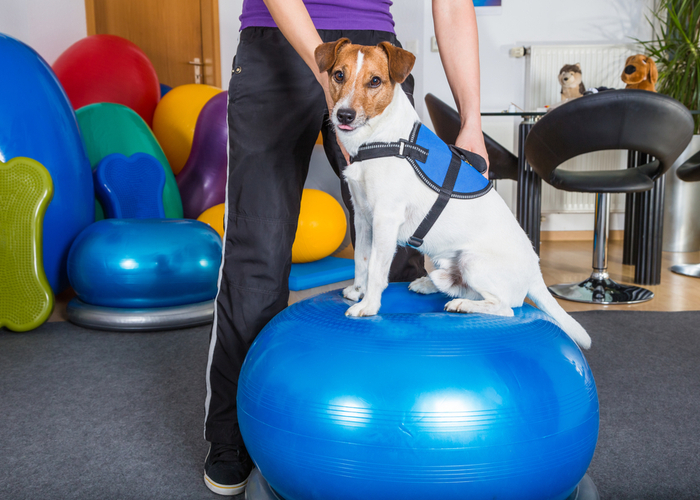
Dog Rehabilitation Cost
Every physical therapist has different rates, and the fee could vary depending on the time spent on a fido.
The type of treatment provided and the frequency of the treatment can significantly affect the price too.
Initial examination and evaluation cost anywhere between $100 to $165, while physical therapy ranges from $40 to $75 per session.
On the other hand, hydrotherapy for dogs costs $35 to $45 for an initial consultation.
And a swimming therapy session costs around $20 to $30, while an underwater treadmill session ranges from $35 to $50.
Our Final Thoughts on Dog Rehab and Physical Therapy
Physical therapy has long been an accepted medical intervention for over 75 years and brings many benefits to canines.
It isn't a replacement for traditional veterinary medicine.
But combining two approaches can speed up your fido's recovery and optimize his health.
So, if you're looking for a non-invasive dog rehabilitation program that doesn't inflict any side effects, physical therapy is the way to go.


